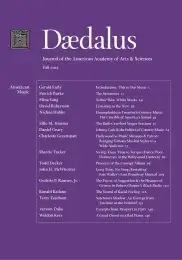Listening to the Now
The future of classical music is almost universally thought bleak. Attendance figures are dropping, and some even question whether it is possible to write new classical music that concertgoers will be able to appreciate. This essay locates the origins of such doomsday prophecy in unquestioned assumptions and seeks to establish just the opposite: that classical music is alive and vibrant, that new creative horizons are constantly opening up, and that audiences will actually enjoy many contemporary classical compositions. The key is to present these unfamiliar works as they are understood by their composers: in a context that allows listeners to make connections between the familiar and unfamiliar, opening their minds to a wealth of new human experience.
This essay had its genesis in a conversation several years ago during a post-concert dinner, classical music’s version of a valedictory celebration. The American composer John Adams spoke of a comment he had come across in Stephen Jay Gould’s book Full House (published in Britain as Life’s Grandeur). The book deals with the limits of possibility in biology, abilities in baseball, and near the end, a few asides regarding general performance in athletics, the arts, and creativity. For Gould, there is a point after which one can no longer create classical music in a way that would be intelligible for listeners. He lists a golden era beginning with Bach and ending with Mahler and wonders if, in this area, human creativity has reached a wall beyond which possibilities are no longer available.
For Adams, whose work consists of imagining just such possibilities, this seemed a surprising idea to advance because it shows a misunderstanding of how composers actually work and think. It also indicates acceptance of a progression from simplicity to ever-greater complexity as the narrative for classical music’s development over time. Further, it displays a lack of awareness of the place contemporary composition ought to occupy in our concert life. Most of us would agree that, presently, it sits in . . .
